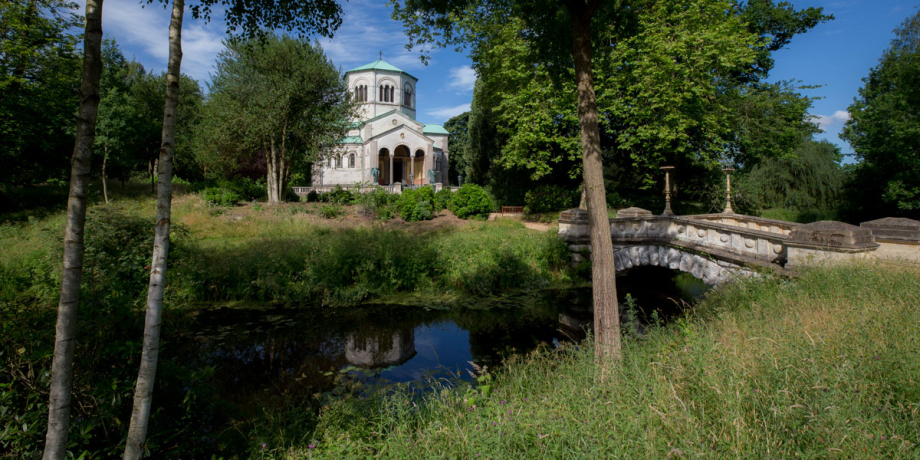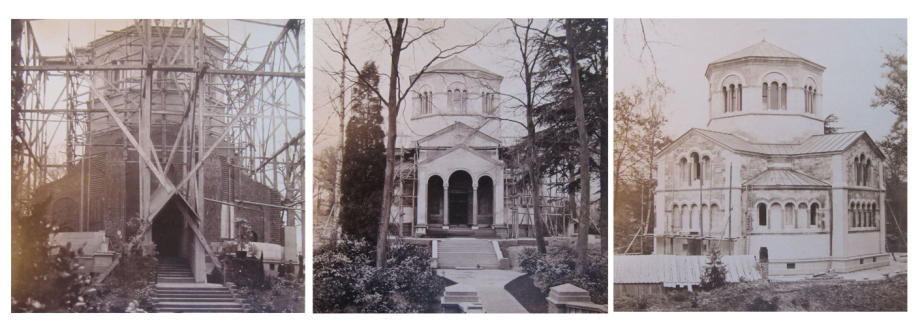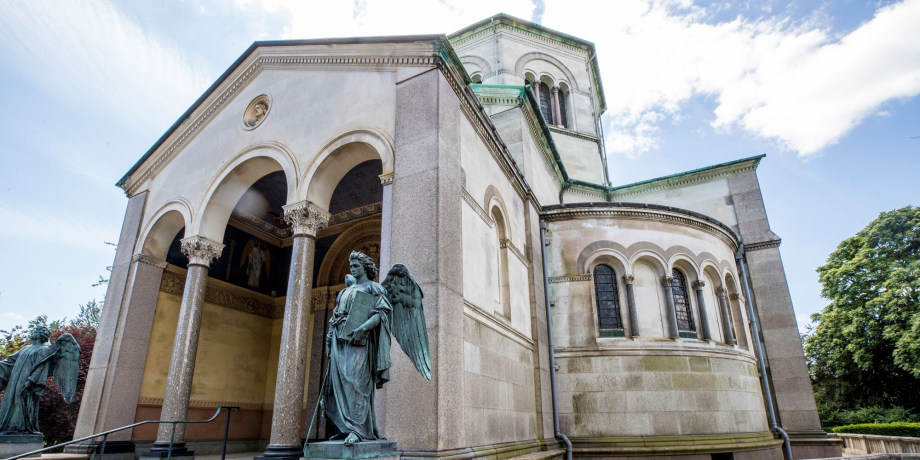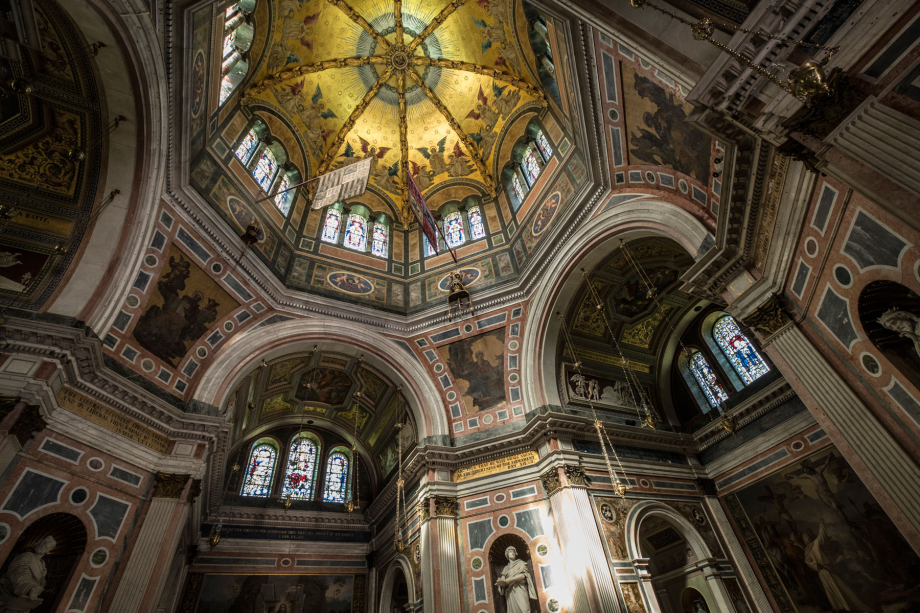This summer, major restoration works began at The Royal Mausoleum at Frogmore, the final resting place of Queen Victoria and Prince Albert. The Mausoleum is located near Frogmore House, which stands about half a mile south of Windsor Castle in Windsor Home Park.

Frogmore earns its name for the wet, marshy location the estate is built on. The Mausoleum was built in a particularly damp area of the site and over the years water has saturated the building, affecting both the structure and interior artwork. The inadequate original drainage system, coupled with the wet location, has meant the Mausoleum has faced damp problems for decades.

Recent temporary measures have prevented further water damage, but now a more comprehensive phase of works is necessary. The restoration project began in June 2018 and will protect the Mausoleum from the historic damp problems.

These films tell the story of The Royal Mausoleum and its restoration so far.
Watch them here.
An Introduction
The Royal Mausoleum was built in in 1862, shortly after the premature death of Prince Albert. The entire project was overseen by Queen Victoria.

After enlisting Prince Albert's principal artistic advisor Ludwig Gruner to build The Mausoleum, Queen Victoria remained heavily involved in all elements of its design.

After its completion, The Mausoleum remained an important part of The Queen's everyday life. Some reports say The Queen would visit The Mausoleum everyday when at Windsor, before being laid to rest there herself in 1901.
A Labour of Love
It was always Queen Victoria's hope that she and her husband, would eventually be interred in a Mausoleum together. It was a break from Royal tradition as Kings and Queens had previously been buried in Westminster Abbey or St. George's Chapel, Windsor.

After Prince Albert's sudden death, Queen Victoria brought Ludwig Gruner, who was Prince Albert's principal artistic advisor and had worked for the royal couple, both at Buckingham Palace and at Windsor Castle, and the architect Albert Jenkins Humbert to design the building.

Senior Curator of Decorative Arts at the Royal Collection Trust, Caroline de Guitaut reveals that the design was 'inspired by Prince Albert's favourite artist Raphael'.

The film reveals how every detail was carefully considered and reflective of the Royal Couple's life together.
Protecting History
The project will see the installation of a new roof, drainage system and windows. The work also includes the excavation of a dry moat around the building's foundations to rectify the damp issues at the source. Internal redecoration will then be addressed once the building has fully dried out. The Mausoleum is currently closed to visitors while these vital works are underway.

In this film, Lead Architect, Natasha Brown explains more about the restoration work underway at the Mausoleum.
'Water has been getting in from the roofs that have been failing, from the downpipes and the rainwater goods that have been failing and blocked up but more importantly from the bottom, where we've got this water just saturating in through the walls.'

This project is entirely funded by the Sovereign Grant, which came into effect in 2011 and is designed to 'maintain and protect historic parts of the estate.'
More about the restoration project at Buckingham Palace here.



